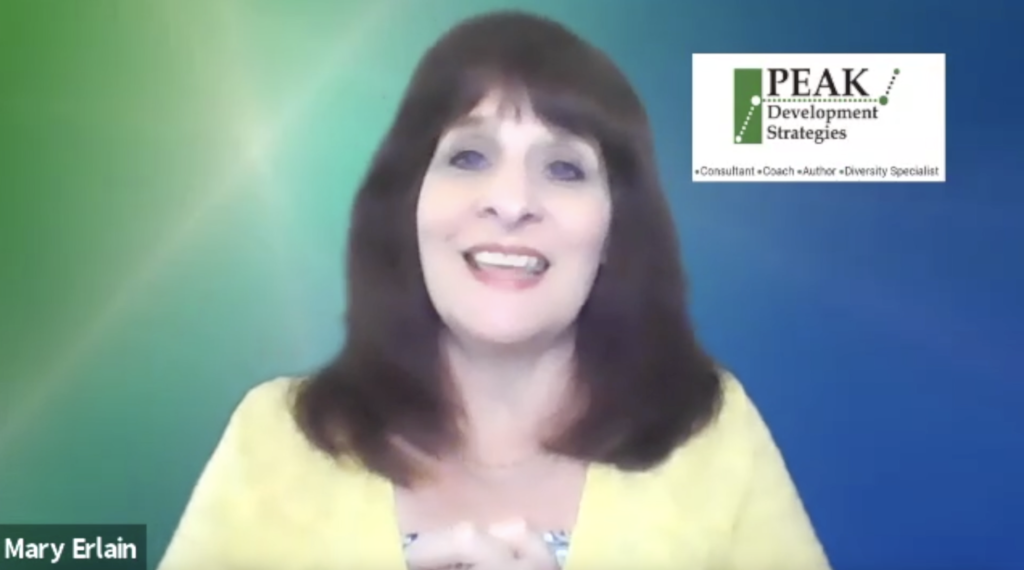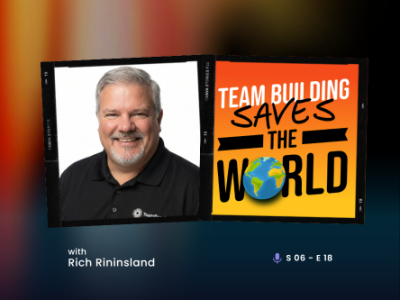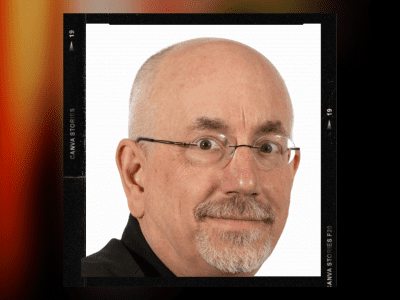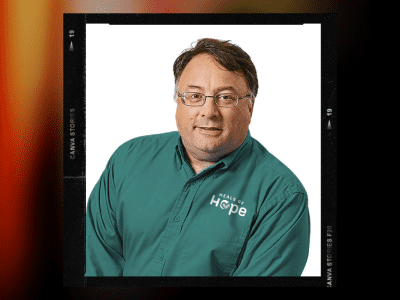Embracing the Multi-Generational Workplace
w/ Mary Erlain
Use the buttons above to listen now.
Transcript - Embracing the Multi-Generational Workplace
Rich: On this episode of Team Building Saves the World: talking about five generations, all working together nowadays.
Mary: Your younger generations of predominantly millennials do not need parenting. They need a manager and a leader, they have parents. They’ve got a lot of control over the marketplace, very similar to the boomers. My, my youngest gen Z son loves post-it notes and, and, and, and I’m, I’m sitting here with an app for all of that. What we have is; it’s different, therefore it’s wrong, which is driven by fear.
Rich: Sure.
Mary: As opposed to not wrong, just different. Hmm, that’s interesting.
Rich: Hello, team! It’s me, your old friend,Rich Rininsland, host of Team Building Saves the World; the show where I speak to the leaders and innovators of the team building industry from all across the globe, trying to find out what about that industry is so important, especially in the world of today. And today we are talking about five generations in one workplace with the writer of Empowering the Multi-Generational Workforce, Mary Erlein. But first, I need to share some love with my supporters at Team Bonding. If your team is ready to experience teamwork through the power of play, then visit teambonding.com to learn more. But now, team, join me in welcoming a published author, international speaker, professional facilitator, and founder of Peak Systems Strategies; Mary Erlain
mary, that is a small group of people I keep trapped under my desk just to applaud you. That’s what they’re here for.
Mary: Very nice.
Rich: Thank you. Thank you so much for coming on board. Can you just to start off, tell my team a little bit about yourself? You know, how you got started in the field?
Mary: I actually have a former healthcare background. I left healthcare at the first wave of managed care, which was many, many moons ago. And that’s amazingly where I did a lot of the research without even being aware of the generations. If I work predominantly in family medicine, I worked for some historic small business owners, meaning that that’s kind of where I learned how business could be run better, you know, small physician offices, you know, had their struggles running business and being on all sides of that. You know, I learned a thing or two. Left that and found my way to, you know, kind of, uh, you know, kind of like the way water drips, you know, to what I’m doing today, reeducating myself and having a passion to help small businesses and business owners be more effective, build a solid foundation, and that is becoming more challenging by the day as we all learned in 2020. Um, I’m not really prophetic, don’t consider myself, but in the first book; Communicating with the Five Generations in the Workplace, I seriously said it; 2020 was going to be a time of change. I did not, even in my wildest dreams think it was going to be a light switch, but that is something I referred to way back in 2013 when that was published. So.
Rich: Well, if you don’t mind my asking, what was it you were doing in the family and clinical medicine that actually helped you prepare for this?
Mary: Uh, working with, you know, the patients back then and understanding, family dynamics, you know, working from looking at the children who are millennials, in the workplace. But just understanding communication, I think that’s probably one of the hardest things to do is communicate. You know, people are rarely going to the doctor, um, because everything is just wonderful in their lives. So I’ve seen people at their most vulnerable and at their worst and understanding at how some people can do that well, and others, people, other people really falter. Also, observing the culture inside these offices, and I will say it is not all that uncommon for there to be significant cultural issues. You know, what you see going on in interaction with patients is not necessarily what’s going on amongst staff. And that’s where a lot of leadership and management caps really ruled the day.
Rich: So let’s dive into it. Talking about five generations, all working together nowadays. I mean, my father passed away, uh, about six years ago now. And he worked till the day he passed. Uh, and you know, I of course am in a work field and my daughter who is 15, she’s now in the workplace. So there’s three generations right there. And we’re all talking about working to, you know, what it was like when we’re working. What kind of challenges are we finding in the workplace right now, between the generations specifically?
Mary: Well, right now the culture has been torn apart or at the very least fragmented. Um, across the nation, you’re going to see a mixed bag of how business is being done. But, bringing people back into the workplace, isn’t as easy as figuring out how the desks align and, you know, putting up barriers and, and whatever. When the world shut down, or at least the United States, uh, shut down in various forms and sending people home; what you did is dismantled, a culture and culture is how we do things. And over time, how we do things become solidified, defines a culture that can be working, um, very well. Or in, in one term, I can recall working with, um, a bank where I asked the HR in one word, how would you describe the culture? And they said ;”vicious”. Seriously. And you have those. I mean, you pretty much have it end to end. But, it was fragmented. And now bringing it back together, even though the people kind of look the same, maybe different hairstyle, maybe aged a little . Everyone has had their own experience through this pandemic from being directly affected. Family; just the nature of trying to work from home with teenagers, small children, blended families, you know, seniors, just the, the challenges have changed people. And, and how the pandemic affected individuals is, is unique to the individual. Yet it does have some similarities across generational lines and, business owners are not paying attention to those finer points. And that’s really where the secret sauce can lie in being able to bring people back together. Cause you can’t start where you left off. It’s impossible.
Rich: Well, before we get to the secret sauce, just for a little clarification sake for my team, uh, what are the five generations that we’re currently looking at?
Mary: Sure. So there are some traditionalists that, you know, are, are north of 70, you know, still in the workplace. I don’t look at dates, even though I do draw attention to them in the books. I don’t see those as light switches. I use those as reference into the life of, in times of somebody in their seventies was very, very different to somebody that’s in their thirties, forties. So, what formed us as a generation is what was going on around us. You know, just what we had in way of receiving communication.
Rich: Right.
Mary: Or the life and times that were going on, you know, the depression versus, you know, um, the gas shortages in the seventies, I mean, very different and they formed us. So our traditionalists are older and they’re there because they either have to be or they want to be. Because, the advances in medicine have had people live well beyond what they thought was going to be the mortality rate in the sixties, way back when social security was put in place and people are living well into seventies, eighties, nineties.
Rich: Right.
Mary: Those are a lot of years just sitting in a rocking chair, if you will. So, then there are those folks that have to work. And I looked at several traditionalist in workplaces during the pandemic when they were the most vulnerable to being affected by COVID.
Rich: Yeah.
Mary: Had to be there and they had to risk literally their life in order to just get by. They’re there in various forms as workers, minimum wage workers, but they’re still business owners in every point in between.
Rich: Right.
Mary: Our baby boomers come in two sets. Um, you kind of split the generation in half. You have the group that was raised in the sixties, you know, during the time of Vietnam war, civil rights, you know, it was a very active and vocal generation. And then you have the baby boomers like me who were raised in the seventies where we were kind of getting it from both sides politically. We had, early on we had president Nixon resigned. I was old enough to understand it, but yet also old enough to be concerned. That affected me. And then we, we shifted and we had the years of significant, you know, inflation. Our particular group tends to distrust government as a result of, of those things.
We had a brand new, disease called AIDS, you know, come on. And that was a great unknown. Then, we had our gen X-ers. This was the, the group that were the latchkey kids, you know, because boomers because of the inflation and because women were accepted in the workplace more and were more educated than the prior generation. You had two parents working and that, not that that didn’t happen before, but that became more acceptable and more common. And these are very independent people. They were the first ones to be able to start to tap into technology as a way of education and, and entertainment.
Rich: Right.
Mary: So, efficiency. You know, how do I save time? And then comes our millennials, our totally misunderstood. Uh, gen X, I’m sorry, gen Y’s. And, um, this group; you know, we, we had, we’d forgotten our gen Zs, cause we’re assuming they’re gen Ys, but they’re not. Our gen Ys truly were ingrained in technology. Oftentimes, you know, they, they, grew up being educated in pods as opposed to rows. Very team driven. Multitaskers.
Rich: Right.
Mary: I have two of these and I could never understand how you could keep the AOL window chat going and doing your math homework. And, and so the processing, very different than prior generations because they had the tools at their fingertips.
Rich: Half of them are currently rolling their eyes at the term “AOL chat window”, but, yeah.
Mary: Well, that’s dating them because you know, they’re calling them geriatric millennials or something like that. I’m like, okay, that’s a stretch. Um, then we have our gen Zs and, and these are folks in, in their early twenties, mid twenties and a little bit younger. And like these, this group was like, my son, defined it. It’s like, well, are you doing anything? Are you going out with your friends? Oh, I’m hanging out with my friends now. And I’m like; Um, you’re in your room.
Rich: Yeah, they live, they live via screens.
Mary: And, and it was, it was being able. But at the same time, um, my son has been able, because you know, he also went to Oxford; he’s been able to maintain relationships across the entire globe. So, as strange as that sounds, what a gift! But these, these folks have never had a day without technology in their hands.
And then we have our little gen alphas, my grandson has his job at Juul. And so he has tipped his toe into the workplace. But these guys who are still kids, but there are some, you know, that that are getting their first job and younger. They’ve got a lot of control over the marketplace, very similar to the boomers. You know, when you look at all the Fisher Price toys and all the things that our children and we as a group drove the market; these guys are driving the innovation because the parents are, in essence, buying for them. So there, there’s the short version.
Rich: Okay. Well, before- let’s go pre pandemic now and with all of these people, all these different eras of people working together, what were some of the challenges that they faced?
Mary: Well, I would say from a cultural perspective; and I have said this, as a business coaching consultant, there are plenty of people that have heard the words out of my mouth, that the people that are in, let’s say it’s a baby boomer or a traditionalist, and it’s like your younger generations of predominantly millennials do not need parenting. They need a manager and a leader. They have parents. And it becomes a common thing for us, speaking for myself, to perhaps see somebody younger and then mother them as an employee, instead of being a manager who has accountability, and metrics, and KPIs, and a leader who helps pass on and mentor and lend a hand up to share leadership skills to these, these people. Very, very different behaviors. But I think that is probably one of the greatest tendencies.
Flip of that, you have people that are very high achieving, younger people that ascend into management roles and are now managing people that are older than them. And they shy away from all the leadership and management skills I just mentioned because it’s like managing mom and dad. So some of this is bringing the family dynamics into the workplace and they just don’t belong there and it takes emotional intelligence. It takes awareness, it takes professional development, um, because we tend to reach for what’s familiar.
Rich: Right.
Mary: And, if we are, if nobody teaches us very much, what you and Melissa are doing with your company, it’s giving people an awareness and a skillset that they don’t possess because we just do what comes naturally.
Rich: Speaking of doing what comes naturally, Mary, I hope you hold on for me for just one second. I do need to step away and do something very natural, which is talk about a company I am very proud to be a part of. I want to tell all my team about Teambonding. Teambonding was founded over 20 years ago with one simple question. How can employees have a great time while fostering strong, authentic bonds between people who work together? They’ve created a catalog of innovative events using the power of play as a learning tool and tapping into the correlation of work and play. From scavenger hunts to jeopardy and so much more. The team bonding of activities, live virtual and hybrid, maximizes the impact of team building with an accent on fun. Please visit teambonding.com to schedule your event now. Teambonding; when you want seriously fun results.
And we’re back with Mary Erlein, talking about five generations and one workplace. So the issue seems to be about communication and the methods of attaining that, is that what you’re saying?
Mary: Yes, because the more we move away from that, the more, we, we start to chip away at trust. You know, I’m, I’m a huge Lencioni fan, the five generations in the workplace. And that’s, that’s another place is, you know, if there isn’t trust amongst people, the rest of it, the rest of it isn’t going to happen. Another challenge is, you know, technology, but, but I think pre pandemic, that was more the case.
Rich: Okay.
Mary: But I think there’s a lot of people, no matter what their age, because I, I have a, a gen X friend of mine who is literally attached to her paper day planner. Um, my, my youngest gen Z son loves post-it notes. And, and, and, and I’m, I’m sitting here with an app for all of that. But, but I think that’s the one benefit is I think the pandemic gave the opportunity for, for that gap. As long as companies were willing to invest and people were willing to put the time in. That gap may have closed a bit more. And perhaps we brought people up to a closer line together. But another area that is processes and procedures, there were people that could just latch on. And then there were those that really struggled that may have something to do with age, but that also just may have something to do with how people process.
Rich: Right.
Mary: And, some need that team, those people that we can literally, physically reach out to and left on their own, they really struggled.
Rich: Hmm. Plus, you’re talking about, as technology is increasing, the way we use it all in the workplace is changing at exponential rates faster than it ever had before. So, you have people coming out of college who have that training, they have that knowledge, they’ve just never had the experience of the workplace while they’re using it. Where are they? What are we seeing, rather, even before the pandemic, are we seeing them surpassing the older managers who were there because they now have the new technological keys?
Mary: It depends, because are the older managers the governor to, to all of that. Meaning, are they the ones kind of holding back on the company. There can be a lot of fear around that when we’re looking at the security of all those. So technology is definitely moving forward, but it’s also having its hiccups. And so, you know, I can’t per se answer that as, as a whole. I think it would be, you know, a case by case basis. And, and I think you’d really need to get down to the root of what does this company need? Not technology for technology sake. Do you have the right people in the right seats to actually do that? I mean, how many, how many times do you hear; “you know, yeah, we have this great CRM. If we can only get the sales team to use it”. So, there’s much more about getting, you know, technology advances. You’ve got to invest in the people too.
Rich: Okay. You had been talking about a secret sauce of how to blend all of these and get the best product. How do we do it? What’s the key?
Mary: Well, I think there’s many keys. But, I think one of those is emotional intelligence. I think, you know, when you’re looking at the emotional intelligence, um, as a, as a whole, but also the individual parts, um, I think companies that were able to survive, do well, and are moving forward to some version of coming back together. I’m thinking they’re probably was some reasonable, emotional intelligence skills, you know, to working together. Um, when emotions are driving people and when old habits, you know, are running the day, when you’re not paying attention to the professional development and opportunities; team skills are more driven by, you know, 1, 2, 3, 4, 5 of a project, as opposed to bringing the right people in the right seats with the right talents; the right facilitator. A lot of that has to do with emotional intelligence. So, you know, in the work I do, you know, we can, and, and I’m, I’m confident we all can spot when emotional intelligence is not where it needs to be. So that’s the first piece because that’s a real cool thing. You can improve your emotional intelligence. It’s like your IQ, another one. Is the team really willing to put the mirror up and understand. First off, is the owner willing to realize that they’re the head of this issue? It starts in their office or offices, and they have to see themselves as part of the problem. And what subtleties or maybe not so subtle things, are they bringing to this? Where are they perhaps supporting these issues either by commission or omission? So there’s a lot of conversation because it’s not a one size fits all. You gotta you’re, you’re bringing a group of people, different names, faces, and social security numbers together. There’s no way you can have some blanket, you know, off the shelf kind of solution. I mean, we do very similar work. You know, you, you may have an idea, but the application becomes very, very unique.
Rich: So, how do you do that? Let’s say that I’m a manager or an owner of a company and I think generationally, I’m seeing some hiccups, I’m seeing some, some challenges. This team not really communicating so well with that team. So on, so forth. And I think bringing you in is something that will definitely help us. What, first of what should I be? What will I see that tells me that it’s time to get outside help? And then what kind of help would you offer?
Mary: Well, you, you may have a seat in a particular department that just keeps turning over.
Rich: Okay.
Mary: You, you’re going to hear some infighting. So, there is, you know, some pointing of fingers with each other. You’re, you know, there, there are various, issues where people are rubbing up against each other. You have people perhaps as islands. And they’re each doing their own thing, their own way. They, they may be getting the result, but you’re, you haven’t created a culture. You’ve created a, a bunch of islands.
Rich: Yep.
Mary: So, the first thing is, is going to be, a conversation to hear the, the owner out. A great example is a nonprofit that we just worked with, not all that long ago. And we had, uh, scripted overall the, the, the container of scripted interview, but the, you know, we can ask clarifying questions. And we talked to every single individual in the workplace and got a great understanding of who they were, how they functioned and how they fit into the, this particular nonprofit. And those were all behavioral and culture based questions. And then looked at all the data from different points of view and gave our feedback and our recommendations. So, we had this whole conversation with the owner, but then we began to get down underneath it and spotted that; okay, he, he or she has the perfect handle; in this case, it was the board, has a perfect handle on the problem.
Rich: Okay.
Mary: Or, it’s just the tip of the iceberg and we got, we got down a little deeper. And then it’s a matter of you know, beginning to build bridges. Depends on how big the organization is. We may have a hand in that, or we may just be working with leadership to mentor them, to be able to do it. Or, it could be reaching to you for a different method of being able to weave, you know, these groups together in innovative ways. And it’s, it’s one foot in front of the other. And, but we don’t lead by ever by assumption.
Rich: Sure.
Mary: People as individuals.
Rich: Let me ask you though, if you can give me an example of some of the questions that you had asked to the boss or the board in that case, that; and you know, you don’t, again, don’t have to get into specifics about any client or, or what have you, but any kind of; what kind of the questions you’re looking for, or you’re looking to get.
Mary: A great question might be; “so, you’ve been given a directive and you don’t particularly agree with it. You’ve had your opportunity to voice that. Help me understand, you know, how you, you might proceed through that. That’s a meaty question because I’m going to see a whole lot of, I’m going to see a whole lot of behavior language in that. And, it’s like; “tell me about a time”. That can be very, very telling to how somebody reacts. Because not everybody gets their way. The, tell me about a time gives me some insight into how the company, how, you know, cause people, some people are like, I can’t remember a time that ever happened and they’re really sincere. So, I mean, there can be so, so much information gathered from a question like that. The “tell me about a time” questions. “can you give me an example”? “could you share the last time”. And, through examples and stories, we can get a pretty good understanding of how things work; the culture, you know, how we do things. We can get a pretty good depiction, but then asking that same question of several people in different, In different roles, you measure their answers and, and begin to understand. We also have a culture quiz, which is, from a Harvard Business Review article I want to say about four years ago, there’s a little electronic quiz. What do you think the culture is? What would you like the culture to be? And that provides data. In this case, I would say 90% of the people agreed on what the culture was for this nonprofit. And it was exactly what it should be. So they had phenomenal results.
Rich: Good.
Mary: We find, we found very few issues there.
Rich: Well, excellent for them, but let’s talk about the people, let’s talk about the people for whom issues are arising. What kind of things should they expect to see? Or, what kind of things could they be dealing with every day and not realize this might be systematic or, you know, informative of a generational problem.
Mary: Oh, a tech company, not shocking, but a tech company, there’s one team of people who were the, app developers. So these, these were the guys that, that, you know, actually created exactly what you were talking about early; customized apps for, various sized companies.
Rich: Okay.
Mary: Then you had your managed service people and, you know, hardware, and whatever. This group was just really hard to get the, for the owner to get their arms around. So I kind of went in and did exactly that; interviewed each one of these individuals. I had the same interview with the owner. And this particular group of people had this culture and need for learning. Not surprising. How it wasn’t the culture of the rest of the organization or the owner. And once he had this realization, and it was as plain as the nose on his face. But he missed it because life is busy. And once he was able to shift and create and create the learning opportunities in a fun way, innovative ways this group was, unstoppable.
Rich: Excellent.
Mary: So, what seems to be a really, really big problem; and it was, it was hurting the bottom line absolutely, was a pretty easy fix in this case. And that may be the case for a company that’s got a faltering group of people. It may be something that is so blindly obvious. And with just a few adjustments, you can bring people on board, very quickly. I won’t say they’re all like that. We hope they are, but that’s one other example.
Rich: That brings up a really good point is the possibility of huge success with all of this. Because when I think about just sitting down with my own family, we have failings of conversation across the board. Simply because, you know, the elders of the family don’t really know how to talk to the kids anymore. And the parents are trying to translate for the grandparents and so on. And that’s just in a family dynamic, not even in the business world, but what are some of the positives? What are some of the, the benefits of multi-generational?
Mary: I have a dear friend I went to high school with, and she also ended up to be a client of one of the largest clients. It’s a household name. And I told her, I said; “do you see that the credit analyst that nobody likes because he’s the one that says ‘no”. I say, you go take him out to lunch and you drain from him everything you possibly can. And she was a great coachable individual, still is. And she did that. And, during our worst part of our recession, she had the greatest numbers of anyone on her team. I liken it, what I do is I, I liken it to, a phone. When we look at our traditionalist, they’re like the corded phones. I actually have one right here. They’re like this thing. My son got this for me. What a surprise for five generations. I had, it’s not plugged in or anything, but it’s, it sits on my desk to remind me. Without the corded phone, we would not have this.
Rich: Right.
Mary: You know? And so, you know, that’s what I say is reach for the,and have a culture of being, inquisitive. You know, you, before these traditionalists are got, not just gone from the workplace, but gone.
Rich: Sure.
Mary: Reach out and, and take them to lunch. Ask them back in the day, how were you successful and take notes? Because, I’m pretty sure there are some things that you can glean from that and utilize as a younger person, vice versa. You know, it’s, it’s sorta like the successful daycare and nursing home or assisted living facility where they brought those folks together. And the little ones could learn from the seniors and the seniors could find joy in the little ones. Well, it’s kind of taken that same concept is asked or don’t judge that, you know, this, this paper planner is just fine. It’s worked for me forever. How do you use that app? What’s the, and become, inquisitive. Like I said; not wrong, just different. What we have is; it’s different, therefore it’s wrong; which is driven by fear.
Rich: Sure.
Mary: As opposed to not wrong, just different. Hmm. That’s interesting. Could you show me? And it goes both ways; it’s building bridges.
Rich: So, it’s almost like for those people who, for whom education is an important aspect of continuing the career. You have the, you have access to all this information and all this knowledge and all this wisdom all coming from all directions, you just have to utilize it.
Mary: And it’s free because how do we build relationships? I mean, when you’ve built a new friend or met somebody and built a relationship with, you ask questions. And it’s a matter of, as opposed to pulling up the Drawbridge and pulling in. Or, you know, extending the hand down the ladder as opposed to pulling the ladder up.
Rich: Right.
Mary: And shutting them out. It’s, it’s a matter of seeking to understand and, and asking questions. You know, there’s, there’s always a coffee house and a table somewhere where two people can sit down and, amazing things can, can happen.
Rich: Well, what about now, when we’re just, I mean, we’re on this side of the pandemic now where the lockdowns are fewer and fewer across the country. People are either looking to either go back to the workplace or to talk to the bosses and say, can I keep doing what I’ve been doing? Because I’ve been successful this entire past year-and-a-half. Where are we seeing people falling generationally?
Mary: Anthony Clots from Texas A and M brought the concept of the great resignation. There’s a host of articles and blogs talking about that. And I think we’re approaching, you know, that breaking point where if we don’t have that conversation, it can really costs the workplace or to the company.
Rich: Right.
Mary: We’ve had people of any age group working from home.
Rich: Yeah.
Mary: And that’s either been a huge deterrent or it’s been a great gift or any point in between. There are many owners that are going to make the mistake to say, that’s it, we’re done. We’re going back to the way it used to be.
Rich: Right.
Mary: Well, making those choices have consequences.
Rich: Yeah.
Mary: And it might be wise to at least hear people out. The people want to be understood. I don’t care what age they are. People want to be understood.
Rich: Right.
Mary: And, engaging in that conversation; it is a very murky and, and I think it’s not yet to be really defined, um, but I would encourage people to bring their teams together and at least give that space to have a productive conversation, strong facilitation, maybe a third party, helping them through that before they make any permanent decisions. I don’t think permanent is even in our vocabulary anymore because we don’t know what the fall has to come when we don’t know.
Rich: Yeah.
Mary: So, you know, I think it’s also to be wise and having a plan B, that if the great resignation happens to your company; now, what? So this is the time to reach out to any consultant, whether it’s you, whether it’s me or someone else, don’t walk this alone because it’s in those conversations and strong facilitation that you may find a different path than the one you thought you were going to go down. So I know that it wasn’t really an answer.
Rich: No, no. I mean, that’s, as we’ve been doing this podcast this entire season, we’ve been dealing more and more with problems and challenges like we’re facing now. Like we’re discussing rather today. And everybody is on pretty much the exact same plane where it’s like these things that people are starting to reach towards, everybody’s tentative. And if you’re not tentative, then the people who you want to follow. Into your next step. They’re tentative. So yeah, I mean all across the country, we’re having people are having the same conversation about different aspects of the workplace.
Mary: I would also wisely encourage them to reach out to a labor lawyer for their guidance and understanding because there are people with their hearts in the right place, writing information. But, each state, each county, you know, has different, slightly different HR. You know, you look at cook county in Illinois, which is, I live in a collar county outside that, and the HR laws are a little different for each one. So before you make any decisions that may affect your employees also seek wise counsel. So that on the other side, there are less surprises and less consequences of your choices that may be costly. So, that’s another area is, don’t walk this alone.
Rich: Right.
Mary: Too many places to trip and fall.
Rich: And it could mean the difference between the success of your company and it’s absolute demise.
Mary: Absolutely. And again, you know, there was a merger and acquisition attorney. I was at one of my, facilitating one of my networking groups and he has a closing today and tomorrow for people who are selling their businesses. What’s driving that is partially pandemic. But also partially driven by the capital gains tax changes that could potentially, you know, we, we don’t know until the vote is in and it’s signed into law. But, there are some other serious things that are not virus related, but are also putting a lot of fear and causing people to choose, to go different directions. And as you well know, a merger and acquisition or a change in ownership of a company brings about its own regardless of five generations and anything else. That brings about a new host of problems.
Rich: It’s going to be an interesting year. And I would-
Mary: Strap in.
Rich: Yeah, I would love so much Mary, once we get to a more clearer defined area on the other side of all this, to have you back and talk more about this, just to see where we’ve gone from this slight distance.
Thank you so much for coming on board. Ladies and gentlemen, please give a big round of applause, one more time for Mary Erlane. I know, I say, Mary, ladies and gentlemen, Mary, but it’s just a button on my keyboard over here.
Mary: That was a standing “O”!
Rich: I know, right? They love you. Oh, and I hope you’ve loved being here, Mary. I hope you’ve had a good time being here. I hope you’ve enjoyed this conversation with me. I’m kind of sucking up to you a little bit right now, because as I told you before we began, it’s time for my speed round.
Mary: Let me get a drink of water.
Rich: There you go. Prepping, always important. You don’t want to pull a muscle. All right, Mary. So as I described to you before, this is going to be 60 quick seconds, where I’m going to ask you a series of innocuous questions. It’s just a fun game. Your objective is try to answer as many as you can within 60 seconds. So, first answer off the top of your head. That’s usually the best way to go. Okay?
Mary: Sure.
Rich: All right. If you are ready once my music begins, then so will I? Oh, if you are feeling competitive at all, the number to beat is 13. So good luck to you. What is your name?
Mary: Mary Erlane.
Rich: How many children do you have?
Mary: Three.
Rich: Which one’s your favorite?
Mary: All of them.
Rich: Ah, see, there’s always the pause there where everybody has to think. What’s your favorite movie?
Mary: Godfather.
Rich: How would you describe this podcast to your friends?
Mary: Fabulous.
Rich: Uh, what historical figure would you like to meet?
Mary: Mother Teresa.
Rich: What book that you’ve written are you most proud of?
Mary: Powering the Multi-Generational Workforce.
Rich: Excellent. If you could live in any television home, which would it be?
Mary: Uh, Johnny Carson’s.
Rich: Okay. What’s your favorite ice cream?
Mary: Vanilla chocolate chip by Haagen-dazs.
Rich: Excellent. And would you rather live in the past or the future?
Mary: Future.
Rich: I’ll give it to you. That’s 10, 10 Mary. Excellent job.
Usually when I ask that TV home one, it’s either Friends or The Simpsons weirdly. And nobody has ever said the Brady Bunch home, because there’s only one bathroom in there.. Mary. Thank you so much again for coming on board. Before we say our goodbyes, why don’t you tell my team where they can find you online or how they can reach out to you.
Mary: Um, Peak Development Strategies, uh, www.Peak-DS.Com and my email address, M.Erlein, E- R- L- E- I- N, @Peak-DS.Com.
Rich: And where can they find your books, too?
Mary: You can find those on Amazon. You can also find the audio books and they’re in Kindle.
Rich: Excellent.
Mary: And what else?
Rich: Oh, no, that was it. That was all.
Mary: Oh, that was it?
Rich: That’s all we need. Thank you very much.
Mary: I’m from Naperville, Illinois.
Rich: Okay.
Mary: Born and raised. I’m sorry.
Rich: That’s okay, just don’t give out your address. That’s all I ask.
Mary: I was talking about the state of Illinois. The great escape is happening in Illinois.
Rich: Ah, excellent. Well, maybe we’ll have you back to find out more about that.
But that’s going to be it for me, my team. Once again, we’re wrapping up another episode of Team Building Saves the World. Thank you so much for coming on board and listening. If you’re brand new to the podcast or an old fan and teammate, please feel free to share this podcast with all the people you know, and love, especially if you think that this topic is something they should be talking about, which I think everybody should. Don’t you, Mary? Fantastic. So you can find us on all the social medias at TeamBondPodcast. You can also find us at Teambonding.com/podcast where you can find not only this, but all of our past episodes. We would love to, if you could like, share, leave comments wherever you find this especially on the social media. And if you write something that I really enjoy, I’ll even share it on a future podcast. But my friends, until that time, until the next time, I’d like to thank each and every one of you for coming on board, being a part of this experience. Always remember, no matter where you are out in the world, if you are within the sound of my voice, you’re now on my team, I am always going to be on your so from all of us here at team-building saves the world to all of you out there.
Thanks a lot for coming on board, team. We’ll see you next time.
it’s been said that you learn more about a person in an hour of play than in a year of conversation. So why not put your coworkers to play with the help of the team at Teambonding? Teambonding was founded over 20 years ago with one simple question: how can employees have a great time while fostering strong, authentic bonds between people who work together?
Their catalog of innovative events include scavenger hunt, jeopardy, and much more. Each activity whether live, virtual, or hybrid maximizes the impact of team building with an accent on fun. Visit Teambonding.com to schedule your event now. Teambonding; when you want seriously fun results. .
July 26, 2021
In this episode of Team Building Saves the World, Rich talks with business coach and consultant Mary Erlain of Peak Development Strategies. There are currently 5 different generations in the workplace – Traditionalists, Baby Boomers, Generation X, Millennials, and Generation Z. Embracing the Multi-Generational Workplace is important in order to connect the generations within your organization. Using the different generations’ unique insights will not only strengthen your team but teach them valuable skills no matter their age.
“The people want to be understood. I don’t care what age they are. People want to be understood.” – Mary
Mary Erlain has published 4 books and is a sought-after speaker and facilitator. She works with owners to identify the core of the issues that stand in the way of growth in companies. Two of Erlain’s books focus on generational diversity. Empowering and embracing the Multi-Generational Workforce is a challenge in most organizations. She brings her knowledge and expertise in this area to any of the services she offers. Peak Development Strategies was founded in 2007 by Mary. “Connecting the dots and removing barriers!” ™ truly conveys the company’s mission in helping business owners and their employees.
Mary and her husband, Dave own a small herd of animals. All rescues! They have three Great Pyrenees dogs that she regularly trips over in the house. And if nearly 400 lbs. of dog is not enough, they also have cats, each with their own rescue story. Their three grown children have also filled their lives with rescued animals.
" Your younger generations of predominantly millennials do not need parenting. They need a manager and a leader. They have parents. And it becomes a common thing for us, speaking for myself, to perhaps see somebody younger and then mother them as an employee, instead of being a manager who has accountability."- Mary
Get more human resources and leadership advice.
Less drama? Greater teamwork and job satisfaction? TeamBonding is here to help you build a stronger and happier team. Subscribe to get our team building podcast and thought leadership blogs sent straight to your inbox.















